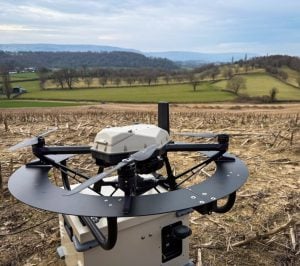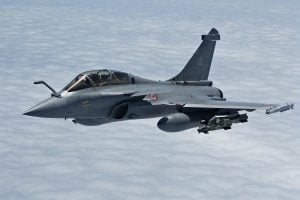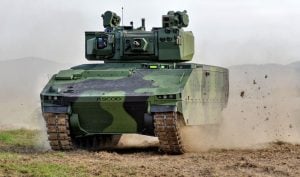Revive work on biological defence programme: NITI Aayog member to DRDO
- Said by V. K. Saraswat, former DRDO chief and current NITI Aayog Member.
- India is among the 183 countries that signed the Biological Weapons Convention of 1975. This prohibits the possession of “biological agents and toxins” for purposes other than “prophylactic, protective, or peaceful”.
- The six DRDO laboratories that work on life sciences are:
- Defence Bioengineering and Electromedical Laboratory, Bengaluru
- Defence Institute of Bio-Energy Research, Haldwani
- Defence Food Research Laboratory, Mysore
- Defence Institute of Physiology and Allied Sciences, Delhi
- Defence Institute of High-Altitude Research, Leh
- Defence Institute of Psychological Research, Delhi
Ladakh on alert after old flashpoint at Galwan river is back in focus
- The Ladakh sector of India’s disputed boundary with China continued to be on alert as reports came in that the Chinese PLA had set up tents close to the Galwan River, an old 1962 flashpoint, and started construction across the Demchok area.
- The army did not comment on the Galwan confrontation but said that short duration face offs do take place as the border dispute with China has not been resolved.
Amid tension on Ladakh LAC, IAF sent SU-30s, Army says no build-up
- The situation on the ground in the Pangong Tso area, sources said, had been brewing for over two months when the Chinese PLA started objecting to movement of Indian patrols up to Finger 8.
- On the night of May 5-6, there was a physical fight between the soldiers of the two armies. At least two senior officers of the Indian Army were among the dozens injured in assaults by Chinese troops using bats, batons with nails, and metal rods. Indian soldiers retaliated, leaving many Chinese soldiers injured.
- Before this incident, an Indian Army helicopter carrying a senior officer came in close vicinity of two Chinese military helicopters in the area. Sources said the Chinese helicopters came dangerously close to the Indian helicopter and the Chinese personnel on board made aggressive gestures.
- After the incident, two Su-30MKI of the IAF from the Leh airbase were also airborne in the area. IAF sources maintained there was no airspace violation by either side, and it undertook routine training flying in the area on May 5.
- Under the existing arrangement between India and China, no fighter aircraft can come within 10 km of the LAC without prior intimation to either side. For helicopters, the distance to be maintained from the LAC is 1 km.
FLIR Wins $39.6 Million Contract to Provide Black Hornet Nano-UAV Systems for U.S. Army’s Soldier Borne Sensor Program
- Extremely light, nearly silent, and with a flight time up to 25 minutes, the combat-proven, pocket-sized FLIR Black Hornet transmits live video and HD still images back to the operator.
- Additional $20.6 million dollar contract has been signed between US Army and FLIR.
- Extremely light, nearly silent, and with a flight time up to 25 minutes, the combat-proven, pocket-sized FLIR Black Hornet transmits live video and HD still images back to the operator. Its information feed provides soldiers with immediate covert situational awareness to help them perform missions more effectively. FLIR has delivered more than 12,000 Black Hornet nano-UAVs to defense and security forces worldwide.
- Founded in 1978, FLIR Systems is a world-leading industrial technology company focused on intelligent sensing solutions for defense, industrial, and commercial applications. FLIR Systems’ vision is to be “The World’s Sixth Sense,” creating technologies to help professionals make more informed decisions that save lives and livelihoods.
THeMIS unmanned ground vehicle successfully towed a 32-ton VBCI fighting vehicle
- The Estonian company Milrem Robotics has released a short video that shows how a 32-ton French VBCI infantry combat vehicle was successfully towed by its unmanned THeMIS ground vehicle.
- THeMIS was originally deployed to Mali with the Estonian Armed Forces (EDF) during a leading French counter-terrorism operation in April 2019.
- THeMIS (Tracked Hybrid Modular Infantry System), unmanned ground vehicle (UGV), is a ground-based armed drone vehicle designed largely for military applications, and is built by Milrem Robotics in Estonia.
- THeMIS is capable of firing conventional machine gun ammunition or missile rounds.
Raytheon with THeMIS:
- The UGV’s versatility allows for explosive ordnance disposal (EOD) applications. Developed in partnership with Raytheon’s UK division GroundEye allows for day or night detection of IEDs, mines and other explosive ordnance.
- THeMIS equipped with GroundEye can geotag the location of threats, allowing operators to neutralise them before they cause damage. With the system mounted on an unmanned vehicle, operators can work at a safe distance.
- The system locates explosive threats using a mix of ground-penetrating radar, command wire detection and more, with the THeMIS-mounted version equipped with an EOD arm to disarm dangers from a distance.
Adder RWS in THeMIS:
- Built for the Estonian Defence Forces by ST Kinetic, the ADDER was the first weapons system to be mounted on THeMIS.
- Featuring a stabilised gun and lock-on targeting, the system proved the ability of the UGV to carry a weapon system paving the way for heavier-duty weaponry.
- The ADDER Remote Weapons System allowed the UGV to be fitted with a range of weapons from general-purpose machine guns to 40mm grenade launchers, transmitting live feeds from a range of cameras that work at night and day with a laser ranger fire for increased accuracy.
THeMIS as Search and Rescue Equipment:
- Milrem is also developing THeMIS’s search and rescue capabilities for civilian and defence purposes. For fires that are too dangerous for humans to approach THeMIS can be equipped with a water tank and remote-controlled water cannon.
- The UGV’s ability to carry out the 3Ds – dull, dirty, or dangerous missions – makes it well-suited for search and rescue and firefighting as the vehicle can go where people cannot. The search and rescue variant was developed under the name of ‘Multiscope Rescue Systems’ but borrows heavily from the military THeMIS platform.
- This variant of the UGV has also been augmented for mining operations transporting heavy equipment and materials in and out of mines, with another variant using Light Detection and Ranging (LiDAR) to determine the condition of mines before humans enter them.
USS Missouri Departs Pearl Harbor Naval Shipyard for Sea Trials
- The U.S. Navy Virginia-class fast-attack submarine USS Missouri (SSN 780) departed Pearl Harbor Naval Shipyard (PHNS) in Pearl Harbor, Hawaii for sea trials on May 10.
- The submarine recently completed a scheduled extended dry-docking selected restricted availability (EDSRA) at the shipyard.
- During the maintenance period, the shipyard and crew performed tank blasting and coating, hull preservation, propulsion, and ship system repairs, and made enhancements to mechanical and electrical systems. Following sea trials, the crew will work together to maintain readiness prior to completing their certification for overseas deployment to support theatre and national tasking.
- The USS Missouri is the Navy’s seventh Virginia Class (VACL) nuclear-powered attack submarine and was commissioned on July 31, 2010, in Groton, Conn. She is the fifth Navy ship to be named in honour of the state of Missouri.
- The 7,800-ton Missouri is 377-feet long, has a 34-foot beam, and capable of diving depths greater than 800 feet and operates at speeds in excess of 25 knots submerged. Missouri is designed with a nuclear reactor plant that will not require refuelling during the planned life of the ship – reducing lifecycle costs while increasing underway time.
U.S. Army orders additional IED hunters
- The U.S. Department of Defense has awarded Virginia-based Chemring Sensors and Electronic Systems Inc. a $2002 million contract modification to manufacture and deliver Army’s Husky hunts IEDs (improvised explosive devices), it announced on 11 May.
- The “Husky” was initially used to detect mines in Africa and was later outfitted to meet route clearance needs of American Soldiers. The Husky vehicle is a hybrid of a tractor and Humvee, with a V-shaped hull that resists explosive blasts.
- The IED hunter uses “ground penetrating radar,” and it is the Husky’s core capability. The radar is first calibrated by taking a sample of the local surface. This sampling then makes it easier to search for anything that seems out of place in the soil, rock, asphalt or other surface over which a convoy would proceed.
US Defence Contractor Sierra Nevada to deliver additional A-29 attack aircraft for Combat Aviation Advisor mission
- The A-29 (Embraer EMB 314 Super Tucano) is a highly maneuverable fourth-generation weapons system capable of delivering precision guided munitions.
- The aircraft already is being used by the Afghan air force (AFF) for close-air attack, air interdiction, escort and armed reconnaissance.
- Designed to operate in high temperatures and in extremely rugged terrain, the A-29 (Embraer EMB 314 Super Tucano) is a highly maneuverable fourth-generation weapons system capable of delivering precision guided munitions. The aircraft already is being used by the Afghan air force (AFF) for close-air attack, air interdiction, escort, and armed reconnaissance.
- The undelimitated contracting action by the U.S. Air Force is for SNC, as prime contractor, and its partner, Embraer Defence & Security, to deliver a third A-29 aircraft, as well as ground support equipment, pilot training (including difference training and instructor pilot upgrade training), contractor logistic support, aircraft sparing, and sustainment for AFSOC’s CAA mission, which helps build international partner capacity.
- The A-29 is the gold standard of light attack combat and reconnaissance aircraft and has been selected by 15 partner air forces around the world to deliver cost-effective close air support and reconnaissance capabilities.
U.S. Navy commences MQ-8C flight testing with new search radar
- The U.S. Navy commenced flight testing of the newest unmanned helicopter, Northrop Grumman MQ-8C Fire Scout, equipped with the Leonardo AN/ZPY-8 advanced search radar.
- The Navy’s newest unmanned helicopter designed to operate concurrently with other airborne assets and littoral combat ships and the new radar will provide commanders an improved and integrated intelligence.
- The Northrop Grumman MQ-8C Fire Scout (known as the Fire-X during development) is an unmanned helicopter developed by Northrop Grumman for use by the United States Navy. The MQ-8C also has autonomous take-off and landing capability. It is designed to provide reconnaissance, situational awareness, aerial fire support and precision targeting support for ground, air, and sea forces.
- The MQ-8C airframe is based on the Bell 407, while the avionics and other systems are developed from those used on the MQ-8B Fire Scout. It first flew in October 2013 and achieved initial operational capability on 28 June 2019.
NATO chief backs Germany’s vow to keep war-ready US nukes
- NATO Secretary General Jens Stoltenberg has waded into Germany’s fiery debate about the decades-old pledge to retain American atomic bombs in the European nation as a way of deterring Russia.
- While NATO views its own nuclear deterrent primarily as a political tool, Russia has firmly integrated its nuclear arsenal into its military strategy.
- As per NATO Sec-Gen, Russia has placed nuclear-capable missiles in Kaliningrad, just 500 km from Berlin and has threatened allies such as Denmark, Poland and Romania with nuclear strikes.
- Russia also forcibly and illegally annexed part of Ukraine, a country whose borders it had previously committed to respect in return for Ukraine giving up its own nuclear protection.
REVIEW QUESTIONS
- Speed of Black Hornet Nano UAV:
- 12 mph
- 13 mph
- 14 mph
- 15 mph
ANSWER: B
- NATO Secretary General:
- Jens Stoltenberg
- HRH Prince Abdul Aziz Bin Salman
- Amjad Hussain B Sial
- KV Kamath
ANSWER: A
- Defence Institute of Bio-Energy Research is located at:
- Mysore
- Haldwani
- Guwahati
- Vellore
ANSWER: B
- Northrop Grumman MQ-8C Fire Scout is a:
- Unmanned aircraft
- Unmanned Helicopter
- Unmanned Submarine
- Unmanned Surface Vehicle
ANSWER: B
- Pearl Harbour Naval Shipyard is located at:
- Osaka
- Hawaii
- Tokyo
- Kobe
ANSWER: B






















1 thought on “Defence Current Affairs And Updates 13th May 2020”
Very useful current affairs…i hope this will help in my exam